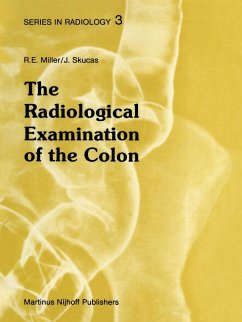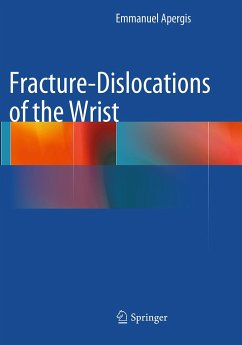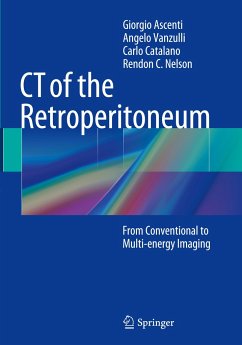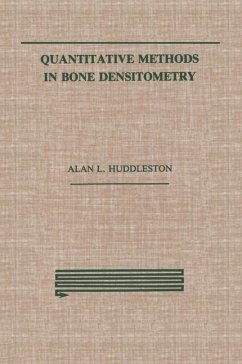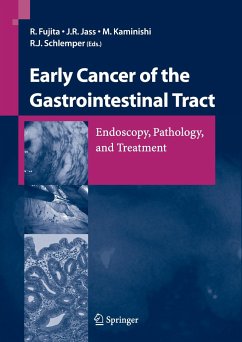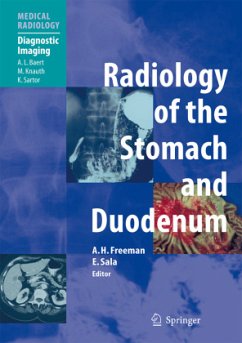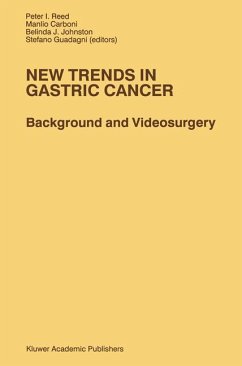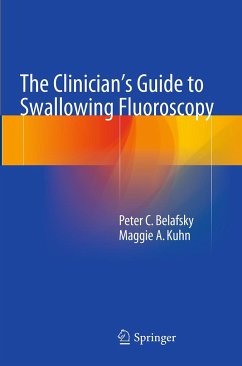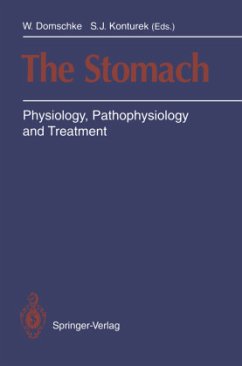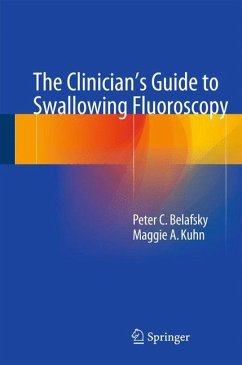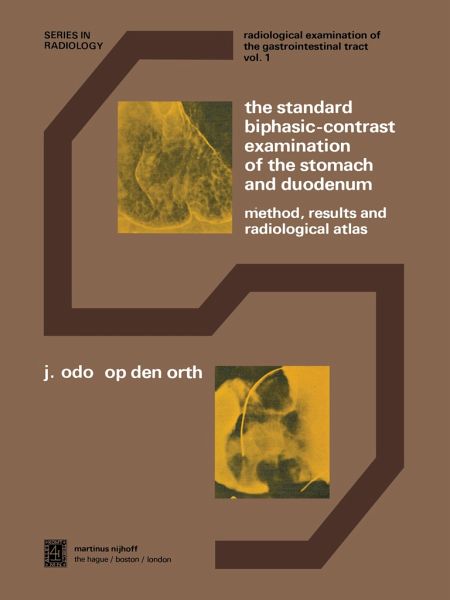
The Standard Biphasic-Contrast Examination of the Stomach and Duodenum
Method, Results, and Radiological Atlas

PAYBACK Punkte
20 °P sammeln!
The rapid growth of fibre-optic endoscopy in recent than 7,500 examinations has been accumulated. years has had two consequences for the radiology of In part I of this study the theoretical background the stomach and the duocienum. and the technique of examination proper are de scribed. The basic principles of interpretation of DC 1. Radiology has lost its previously rather auton studies are stated. omous position in this field. Part II deals with the results. Chapter 5 consists of 2. As a result of the constant feed-back from the general remarks on the results, and on the comple endoscopist, ...
The rapid growth of fibre-optic endoscopy in recent than 7,500 examinations has been accumulated. years has had two consequences for the radiology of In part I of this study the theoretical background the stomach and the duocienum. and the technique of examination proper are de scribed. The basic principles of interpretation of DC 1. Radiology has lost its previously rather auton studies are stated. omous position in this field. Part II deals with the results. Chapter 5 consists of 2. As a result of the constant feed-back from the general remarks on the results, and on the comple endoscopist, which the radiologist can and should mentary role of radiological examination and endos have, he is in an excellent position to re-evaluate copy. Chapter 6 deals with a quantative study of and improve his own technique of examination. standard biphasic-contrast examinations in patients The author believes that the radiological exam over a period of 3 years. This study was restricted to ination retains its value as a screening technique and malignant lesions, because it is only in this group a complementary method to gastroscopy and biop that the definite criterion, a histological diagnosis, is sy. Only a sophisticated radiological technique will obtained. The natural history of malignant lesions fulfil these requirements. In 1973 the author devel also makes follow-up studies possible. Results of the oped a standard examination that was called "bi diagnosis of Early Gastric Cancer (EGC) are phasic", because it combines the advantages of included.





